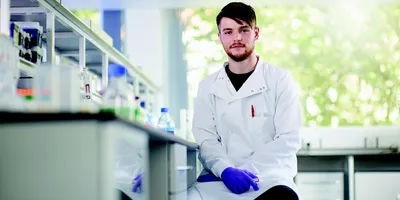We asked Lab Manager readers to tell us about their life science technology use including biological safety cabinets, bioreactors, DNA sequencers, electrophoresis equipment, gel imagers, hybridization ovens, immunoassay technology, incubators, microarray technology, microplate technology, microscopy, qPCR instruments, thermocyclers, scintillation counters, and slide scanners.
For those conducting life science research, close to half are working in cellular or molecular biology and microbiology.
What areas of life science are you currently working in?
| Cellular or Molecular Biology | 44.69% |
| Microbiology | 44.05% |
| Immunology | 32.48% |
| Genetics or Genomics | 29.58% |
| Cancer | 25.40% |
| Infectious Diseases | 24.12% |
| Anatomy or Physiology | 15.76% |
| Neuroscience or Behavior | 12.86% |
| Ecology or Environmental Biology | 10.61% |
| Computational Biology or Bioinformatics | 9.65% |
| Plant Biology | 8.68% |
| Development or Regeneration | 5.79% |
| Epidemiology or Population Biology | 4.82% |
| Evolutionary Biology | 4.18% |
| Clinical Testing | 1.93% |
| Pathology | 1.61% |
| Biochemistry | 0.64% |
| Medicine | 0.64% |
| Other | 7.07% |
Maintenance
Maintenance is vital to keeping your life science technology in good working order. Approximately 65 percent of those using life science technology employ in-house staff to perform maintenance on their equipment. However, respondents noted that this maintenance can be complicated, especially when clear instructions aren’t provided. A further 63 percent use the original equipment manufacturer to service their life science technology, but dealing with service contracts can be time-consuming, difficult to navigate, and expensive.
Who performs your life science technology maintenance?
| In-house staff | 64.46% |
| Original equipment manufacturer (OEM) | 62.35% |
| Third-party service provider | 37.35% |
| Multi-vendor service provider | 25.30% |
| Not applicable | 1.51% |
| Other | 0.60% |
Purchasing Plans
Approximately 78 percent of survey respondents are looking to purchase new life science technology in the near future. The highest percentage of respondents are looking to purchase microscopy solutions. Microscopes are essential tools in the life science lab, but constant advancements in technology mean there are always new models emerging. Improved camera quality, new imaging techniques, and software that is easier to use are just some of the features that might persuade researchers to replace their aging microscopes.
For those who are planning to purchase new life science technology, approximately 45 percent are looking to add to their existing systems or increase their capacity. A further 12 percent are looking to purchase for the first time or are setting up a new lab. These promising numbers suggest growth in the area of life science research.
If you are planning to purchase new life science technology, what is your primary reason?
| Adding to existing systems, increasing capacity | 44.96% |
| Replacing aging system | 34.11% |
| Changing to a different method | 7.36% |
| Purchasing for the first time | 6.20% |
| Setting up a new lab | 6.20% |
| Other | 1.16% |
Life science research also requires many reagents and kits that need to be ordered on a regular basis. Close to one third of survey respondents are ordering cell culture consumables such as plates and media on a monthly basis. One challenge respondents face when it comes to kits and consumables is the lack of assays developed for non-human species.
How frequently does your lab purchase the following supplies?
| Once a month | |
|---|---|
| Cell culture consumables (plates, media, etc.) | 30.60% |
| PCR/qPCR kits | 15.36% |
| Immunoassay kits (e.g. ELISA) | 12.89% |
| DNA/RNA/protein isolation/purification kits | 11.36% |
| Antibodies for IF | 10.13% |
| Antibodies for western blotting | 9.29% |
| Antibodies for IHC | 8.39% |
| Reagents for western blotting | 7.28% |
| Sequencing kits | 6.15% |
| Plasmid miniprep kits | 5.47% |
More than 90 percent of survey respondents agree that reliability and accuracy are the most important factors to consider when purchasing life science technology. Less than 30 percent of respondents are concerned about the size of the instrument or its novelty when purchasing this type of equipment.
Please rate the following factors/features that influence your decision-making process when purchasing life science technology.
| Once a month | |
|---|---|
| Reliability | 92.90% |
| Accuracy | 92.81% |
| Durability | 77.26% |
| Ease of use | 68.32% |
| Service and support | 66.15% |
| Low maintenance / easy to clean | 63.55% |
| Compatibility with current equipment | 62.19% |
| Low operating costs | 59.51% |
| Safety features | 57.19% |
| Warranty | 50.78% |
| Small footprint / size | 27.10% |
| Novelty | 14.78% |
One of the major concerns survey respondents have about life science technology is how expensive the equipment is. At the same time, respondents note that instruments often become obsolete before they stop working, making it difficult to find the parts necessary for repairs. They believe that software and parts should be available for years after the instrument is manufactured rather than rendering the instrument obsolete. At the same time, the high cost of life science technology can make it difficult to keep up with the latest trends and techniques.










